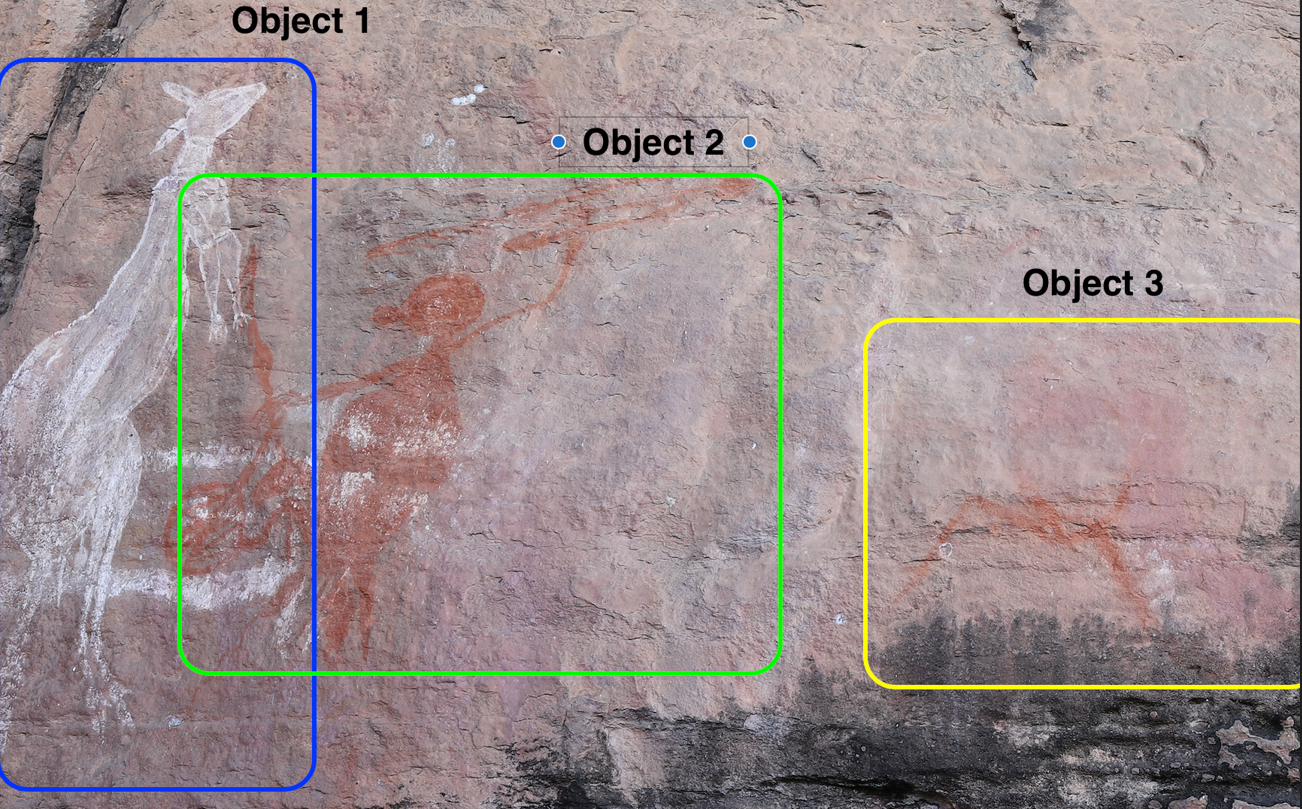Media release
Researchers have developed a way to detect the presence of rock art in remote, hard-to-reach areas in Australia’s rugged landscapes using Machine Learning (ML) methods.
Co-led by Dr Andrea Jalandoni, a digital archaeologist from Griffith University’s Centre for Social and Cultural Research, the study used hundreds of images of rock art found within Kakadu National Park to train a ML model to detect whether painted rock art was present within the image.
The model achieved an 89% success rate, meaning it determined which images contained rock art the vast majority of times.
“Some of these sites are not easily accessible, so alleviating some of the time, effort and expense to mount some explorative missions is of huge value to this type of archaeological research in some of the most remote areas of Australia,” Dr Jalandoni said.
“Once our ML model picks up whether an area photographed potentially contains previously undiscovered rock art, scientists can then go in and ground-truth the site to verify if there is rock art present and report on it further.”
Dr Jalandoni and co-lead author Dr Nayyar Zaidi from Deakin University worked closely with the traditional elders of Kakadu National Park on the study.
Dr Zaidi said “the work demonstrated the power that ML and AI brings to archaeological research, and paves the way towards ground-breaking research with a significant impact in the coming years – we are excited about the second phase of our study”.
In areas where numerous rock art sites exist, much of the rock art is unidentified and therefore remains unrecorded and unresearched.
Automating the many processes in rock art research could greatly facilitate rock art research in many ways, such as through Object Recognition and Detection, Motif Extraction, Object Reconstruction, Image Knowledge Graphs and Representations, the research team said.
Dr Jalandoni said with the efficacy of the ML model used in this study, the method could be used to train models that were specific to the rock art found in different regions around the world.
She said the findings could also be useful in the development of an app that tourists could use to upload images of potentially undiscovered rock art examples for further analysis.
“If you are a tourist in an area that could potentially have rock art within it and you're taking pictures, one of the future goals is for us to develop an app where you can add your image to the collection to see if it’s been documented or if it could be undiscovered rock art that needs to be examined,” Dr Jalandoni said.
“So it would allow citizen scientists on the ground to take part in important archaeological research.”
The findings ‘On the use of Machine Learning Methods in Rock Art Research with Application to Automatic Painted Rock Art Identification’ have been published in the Journal of Archaeological Science.




